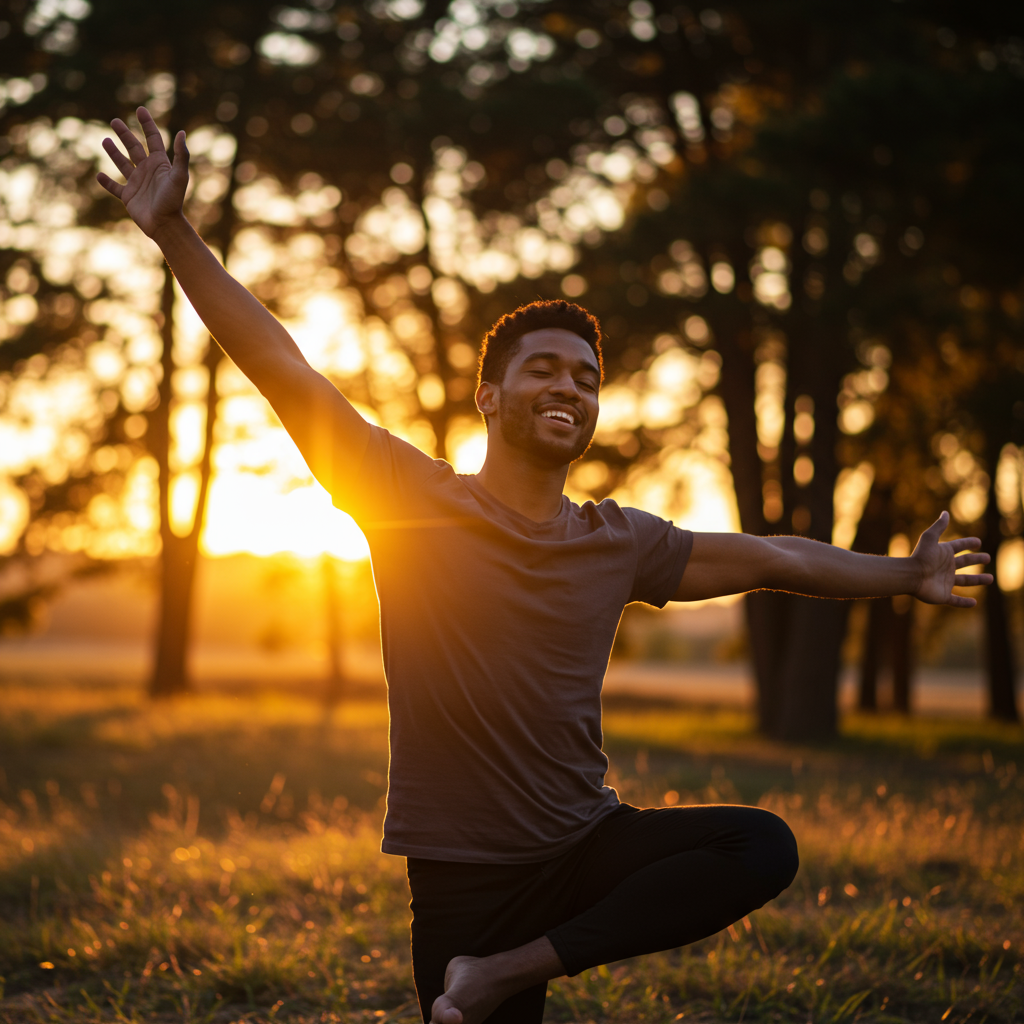
Table of Contents
Introduction
Have you ever felt overwhelmed by the constant pressures of daily life, wishing for a simple way to calm your mind and ease your body? Breathing exercises offer a remarkably accessible and effective method to achieve relaxation, no matter where you are or what’s happening around you. Just by focusing on your breath, you can begin to reduce stress and invite a sense of peace into your everyday routine.
Stress has become an unavoidable companion for many people these days, impacting physical health, emotional well-being, and even cognitive ability. Research shows that chronic stress contributes to numerous health problems, including heart disease, weakened immunity, and persistent pain. Understanding the effects of stress on the body sheds light on why finding practical and immediate ways to relax is more important than ever. Breathing exercises, grounded in ancient practices but validated by modern science, serve as a powerful tool to counter the harmful impacts of stress swiftly and effectively.
When life feels frantic, it’s easy to overlook the power of such a fundamental act as breathing. Yet, many people experience tangible benefits from incorporating intentional breathwork into their daily lives. Besides alleviating tension, controlled breathing can help improve focus, promote better sleep, and support emotional balance. If you’re concerned about stress undermining your health or mental well-being, exploring breathing exercises can be a transformative first step. For broader strategies, you might want to explore stress management techniques that complement breathing exercises beautifully.
Physical discomfort often intertwines with emotional stress, creating a cycle that’s difficult to break. Exercises designed to relieve physical tension, such as exercises to relieve back pain, often pair well with breathing practices, helping to release both physical and mental strain. Moreover, increasing awareness of mental health awareness encourages many people to seek gentle yet effective relaxation methods like breathing exercises to nurture their overall wellness.
What You’ll Learn in This Guide
In this comprehensive guide, we’ll walk you through everything you need to know about using breathing exercises for relaxation. Here’s what we’ll cover:
- Understanding the Basics: We’ll explain the physiological and psychological mechanisms behind breathing exercises and why they profoundly impact relaxation and stress relief.
- Step-by-Step Techniques: You’ll get clear, detailed instructions for key breathing methods such as deep breathing, box breathing, and 4-7-8 breathing to practice with confidence.
- Benefits to Mind and Body: Explore the mental, emotional, and physical benefits of regular breathing exercises, including improved focus, reduced anxiety, and better sleep quality.
- When and How to Practice: Learn the best circumstances and tips for incorporating breathing exercises into your daily routine for maximum effectiveness and lasting calm.
As you move forward in this article, you will not only gain knowledge but also practical skills to use breathing exercises as a powerful relaxation tool. Whether you’re new to breathwork or looking to deepen your practice, this guide offers something valuable for everyone.
We will begin by exploring different breathing techniques, explaining how each one works to calm the nervous system and promote a relaxed state. Next, you’ll find comprehensive, easy-to-follow instructions to help you perform these exercises effectively.
Following that, you’ll discover a deeper understanding of the many benefits that regular practice can bring to your mental clarity, emotional balance, and physical health. This knowledge will inspire and motivate you to integrate breathing exercises into your life consistently.
Finally, we’ll share practical guidance on when to use these techniques—whether during moments of acute stress, before sleep, or as a daily mindfulness habit—and tips to maximize their impact in your personal environment. By the end, you’ll be equipped with all the tools to start harnessing the power of your breath to cultivate lasting relaxation and resilience. Let’s breathe in calm and breathe out tension together as we dive deeper into this simple yet powerful practice.

Building upon the introduction, breathing exercises serve as a powerful and accessible way to reduce stress and cultivate a state of relaxation in everyday life. Understanding how these techniques work physiologically and psychologically sets the foundation for effective practice. Whether you are new to mindful breathing or seeking to deepen your skills, exploring key breathing methods and their practical applications will enhance your ability to manage tension and promote calm. This discussion delves into core concepts behind breathing exercises and the best ways to perform them for maximum relaxation benefits.
Understanding the Science Behind Breathing Exercises
Breathing exercises are intentional techniques that modify the pattern, rate, and depth of your breath to influence your nervous system and emotional state. Deep, controlled breathing activates the parasympathetic nervous system, which reduces the heart rate, lowers blood pressure, and releases muscle tension. This physiological shift helps combat the body’s natural stress response. Additionally, the rhythmic focus on inhalation and exhalation centers mental attention, which enhances mindfulness and mental clarity. To fully grasp this concept, it helps to understand how the nervous system reacts to different breathing patterns and the resulting impact on emotional regulation.
Different breathing techniques provide varying benefits, and practicing a range of methods allows you to tailor your approach based on your immediate needs and preferences. Some exercises emphasize slow deep breaths to quiet anxiety, while others use breath retention to improve concentration. Recognizing the types of breathing exercises available is key to integrating them into your wellness routine.
Key Types of Breathing Techniques
Familiarity with these core breathing techniques allows for deliberate use depending on relaxation goals and situations:
- Deep Breathing: Involves slow, full breaths into the diaphragm rather than shallow chest breathing. This technique helps calm the nervous system and reduce physical tension.
- Box Breathing: A pattern of inhaling, holding, exhaling, and pausing each for equal counts, typically four seconds. This method improves focus and provides a structured way to regulate breath.
- 4-7-8 Breathing: This technique guides you to inhale for 4 seconds, hold for 7 seconds, then exhale for 8 seconds. It is particularly effective at inducing a deep state of relaxation and aiding sleep.
- Alternate Nostril Breathing: Involves breathing through one nostril at a time, alternating sides. Common in yoga and meditation, this exercise balances nervous system activity and promotes calm energy flow.
How to Master Key Breathing Exercises for Relaxation
Performing breathing exercises correctly is essential to gaining their relaxation benefits. Attention to posture, breath depth, and timing ensures you engage the respiratory and nervous systems effectively. Creating a consistent practice routine further solidifies these benefits, turning breathing exercises into a dependable tool for managing stress.
For a detailed breakdown of this step, see our guide on how to prepare your environment and maintain focus during breathing exercises. Establishing a quiet, comfortable setting away from distractions boosts practice quality and helps deepen relaxation.
Important Tips for Practicing Breathing Exercises
To help you get the most from your breathing routine, consider these essential points:
- Maintain Proper Posture: Sitting or lying comfortably with a straight spine allows optimal lung expansion and efficient breathing. This support maximizes oxygen intake and helps prevent dizziness or discomfort.
- Focus on Breath Depth and Control: Engage your diaphragm rather than shallow chest muscles. Slow, measured breaths combined with mindful awareness of inhalation and exhalation enhance the calming physiological response.
- Practice Regularly: Consistency is key. Daily practice, even for five to ten minutes, builds a habit and strengthens the nervous system’s response to relaxation cues over time.
- Integrate with Other Relaxation Techniques: Combining breathing exercises with mindfulness meditation, gentle yoga, or progressive muscle relaxation can amplify overall stress relief and mental calmness.

